
下载亿题库APP
联系电话:400-660-1360

下载亿题库APP
联系电话:400-660-1360

请谨慎保管和记忆你的密码,以免泄露和丢失

请谨慎保管和记忆你的密码,以免泄露和丢失
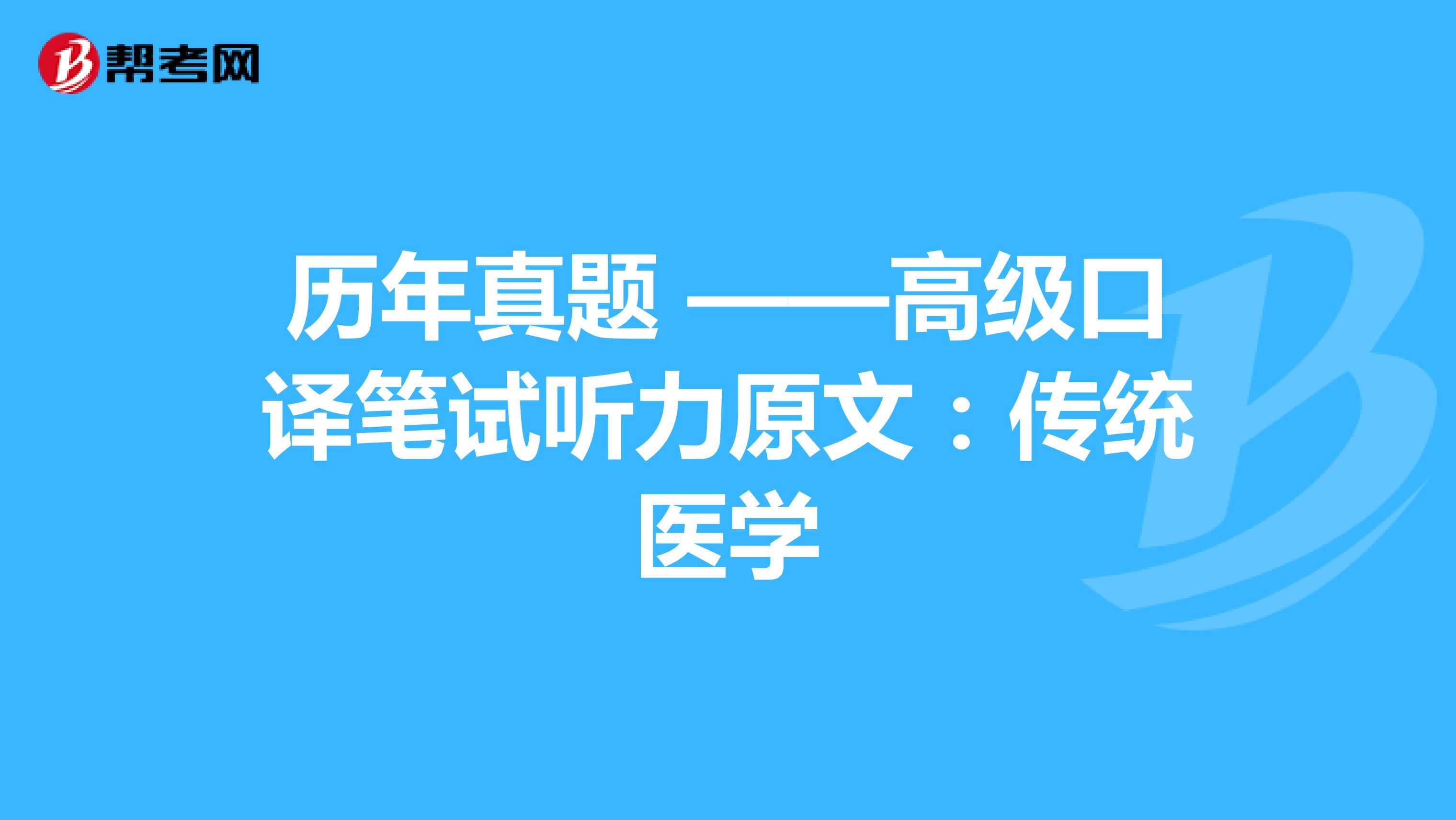
为了帮助广大考生顺利通过口译笔译考试,帮考网为大家分享了一些高级口译试题相关内容,希望大家每天坚持练习,积极备考。
Traditional Medicine
传统医学
Key facts
• In some Asian and African countries, 80% of the population depend on traditional medicine forprimary health care.
• Herbal medicines are the most lucrative form of traditional medicine, generating billions of dollars in revenue.
• Traditional medicine can treat various infectious and chronic conditions: new antimalarial drugs were developed from the discovery and isolation of artemisinin from Artemisia annua L., a plant used in China foralmost 2000 years.
• Counterfeit, poorquality, oradulterated herbal products in international markets are serious patient safety threats.
• More than 100 countries have regulations forherbal medicines.
Traditional medicine is the sum total of knowledge, skills and practices based on the theories, beliefs and experiences indigenous to different cultures that are used to maintain health, as well as to prevent, diagnose, improve ortreat physical and mental illnesses.
Traditional medicine that has been adopted by other populations (outside its indigenous culture) is often termed alternative orcomplementary medicine.
Herbal medicines include herbs, herbal materials, herbal preparations, and finished herbal products that contain parts of plants orother plant materials as active ingredients.
Who uses traditional medicine?
In some Asian and African countries, 80% of the population depend on traditional medicine forprimary health care.
In many developed countries, 70% to 80% of the population has used some form of alternative orcomplementary medicine (e.g. acupuncture).
Herbal treatments are the most popular form of traditional medicine, and are highly lucrative in the international marketplace. Annual revenues in Western Europe reached US$ 5 billion in 2003-2004. In China sales of products totaled US$ 14 billion in 2005. Herbal medicine revenue in Brazil was US$ 160 million in 2007.
Challenges
Traditional medicine has been used in some communities forthousands of years. As traditional medicine practices are adopted by new populations there are challenges.
International diversity: Traditional medicine practices have been adopted in different cultures and regions without the parallel advance of international standards and methods forevaluation.
National policy and regulation: Not many countries have national policies for traditional medicine. Regulating traditional medicine products, practices and practitioners is difficult due to variations in definitions and categorizations of traditional medicine therapies. A single herbal product could be defined as either a food, a dietary supplement oran herbal medicine, depending on the country. This disparity in regulations at the national level has implications forinternational access and distribution of products.
Safety, effectiveness and quality: Scientific evidence from tests done to evaluate the safety and effectiveness of traditional medicine products and practices is limited. While evidence shows that acupuncture, some herbal medicines and some manual therapies (e.g. massage) are effective forspecific conditions, further study of products and practices is needed. Requirements and methods for research and evaluation are complex. Forexample, it can be difficult to assess the quality of finished herbal products. The safety, effectiveness and quality of finished herbal medicine products depend on the quality of their source materials (which can include hundreds of natural constituents), and how elements are handled through production processes.
Knowledge and sustainability: Herbal materials forproducts are collected from wild plant populations and cultivated medicinal plants. The expanding herbal product market could drive over-harvesting of plants and threaten biodiversity. Poorly managed collection and cultivation practices could lead to the extinction of endangered plant species and the destruction of natural resources. Efforts to preserve both plant populations and knowledge on how to use them formedicinal purposes is needed to sustain traditional medicine.
Patient safety and use: Many people believe that because medicines are herbal (natural) ortraditional they are safe (orcarry no risk forharm). However, traditional medicines and practices can cause harmful, adverse reactions if the product or therapy is of poorquality, orit is taken inappropriately orin conjunction with other medicines. Increased patient awareness about safe usage is important, as well as more training, collaboration and communication among providers of traditional and other medicines.
WHO response
WHO and its Member States cooperate to promote the use of traditional medicine for health care. The collaboration aims to:
• support and integrate traditional medicine into national health systems in combination with national policy and regulation forproducts, practices and providers to ensure safety and quality;
• ensure the use of safe, effective and quality products and practices, based on available evidence;
• acknowledge traditional medicine as part of primary health care, to increase access to care and preserve knowledge and resources;
• ensure patient safety by upgrading the skills and knowledge of traditional medicine providers.
看到这里小伙伴们是否有所收获呢?希望帮考网分享的内容能给大家带来帮助,后续也可以多关注帮考网,这里有更多的考试资讯,你想知道的都在这!
 27
27三级笔译和口译考试每年可以考几次?:三级笔译和口译考试每年可以考几次?通常情况下笔译口译考试都是每年两次。上半年一般在1月份报名,5月份考试,下半年一般在7月份报名,11月考试,各省市情况不一,具体情况可上CATTI官网或各省市人事考试网查询。
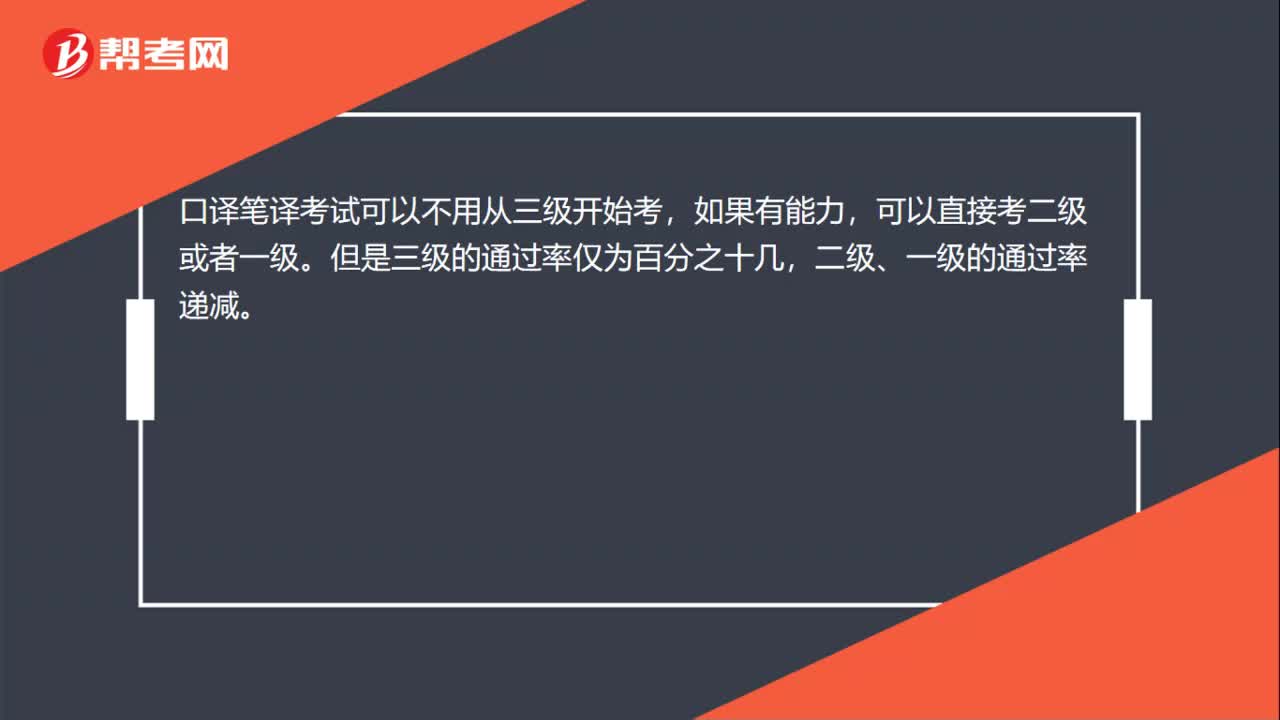 20
20口译笔译考试必须要从三级开始考吗?:口译笔译考试必须要从三级开始考吗?口译笔译考试可以不用从三级开始考,如果有能力,可以直接考二级或者一级。但是三级的通过率仅为百分之十几,二级、一级的通过率递减。
 31
31如何选择口译笔译考试的中级还是高级?:如何选择口译笔译考试的中级还是高级?一般来说,如果通过四级考试的考生,建议报考中级;如果通过六级考试,并且分数在75分以上,听力和口语较好者,可以报考高级。
 00:23
00:232020-06-03
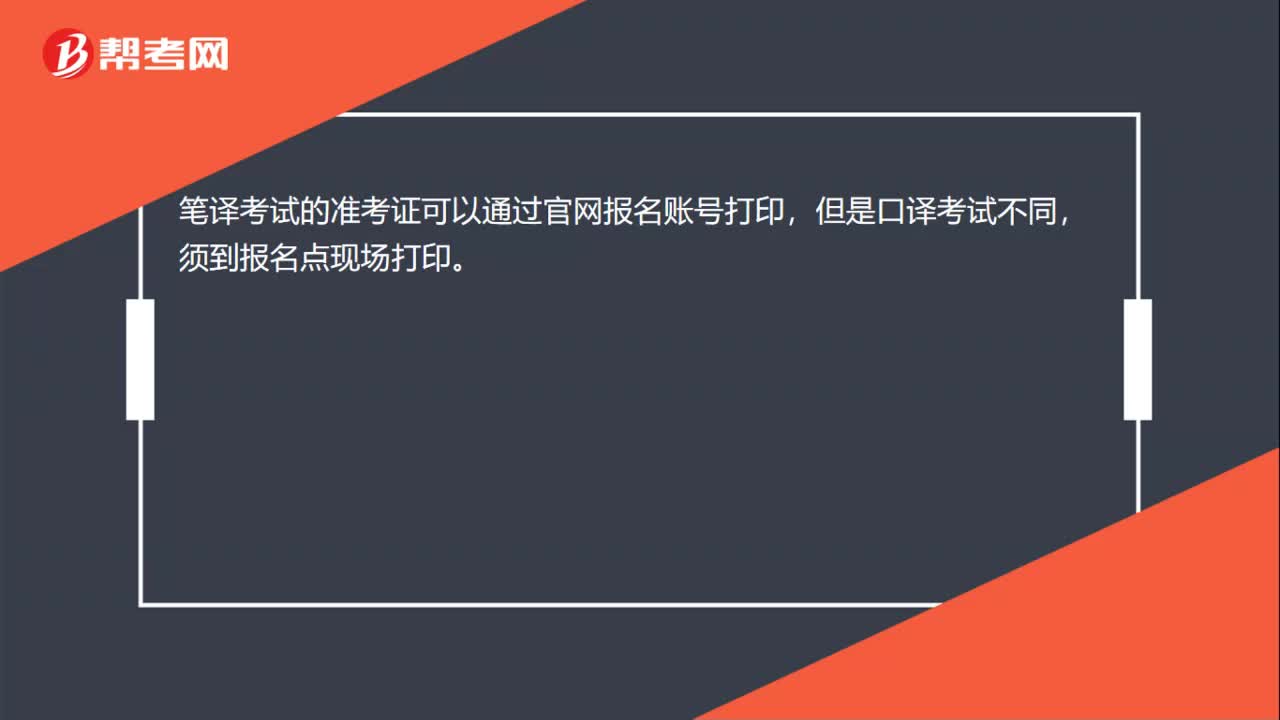 00:15
00:152020-06-03
 00:27
00:272020-06-03
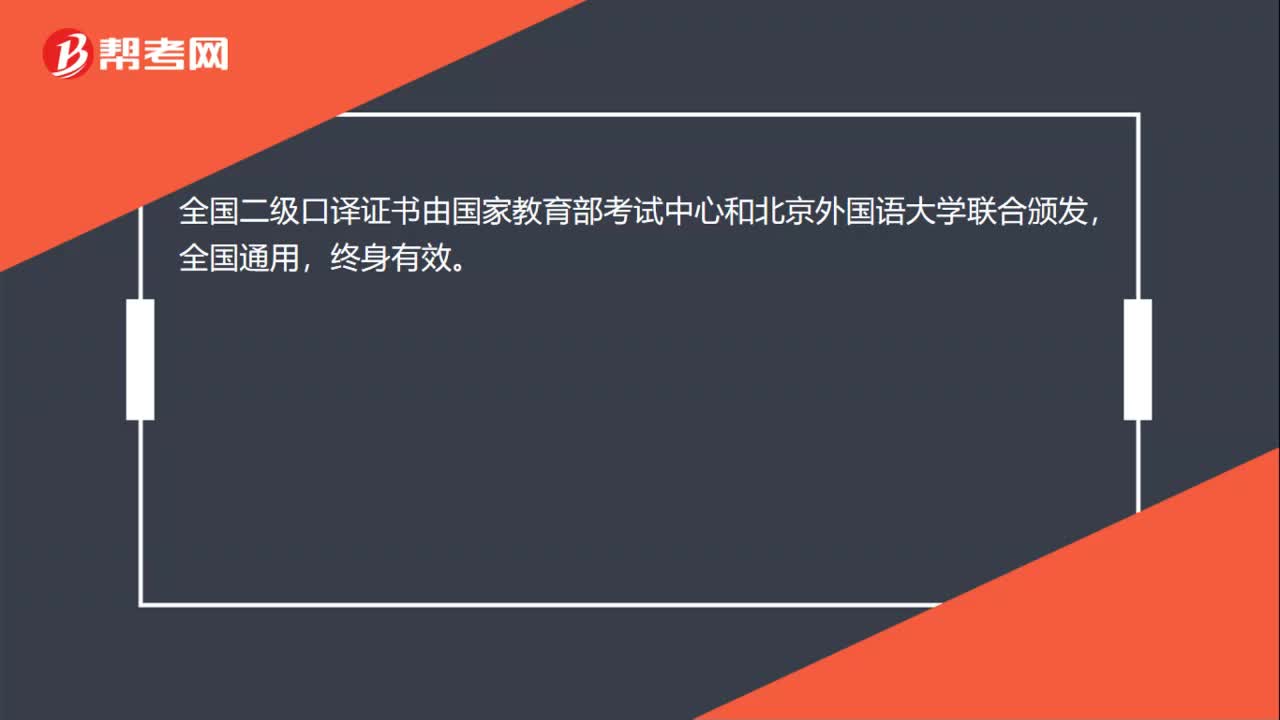 00:17
00:172020-06-03
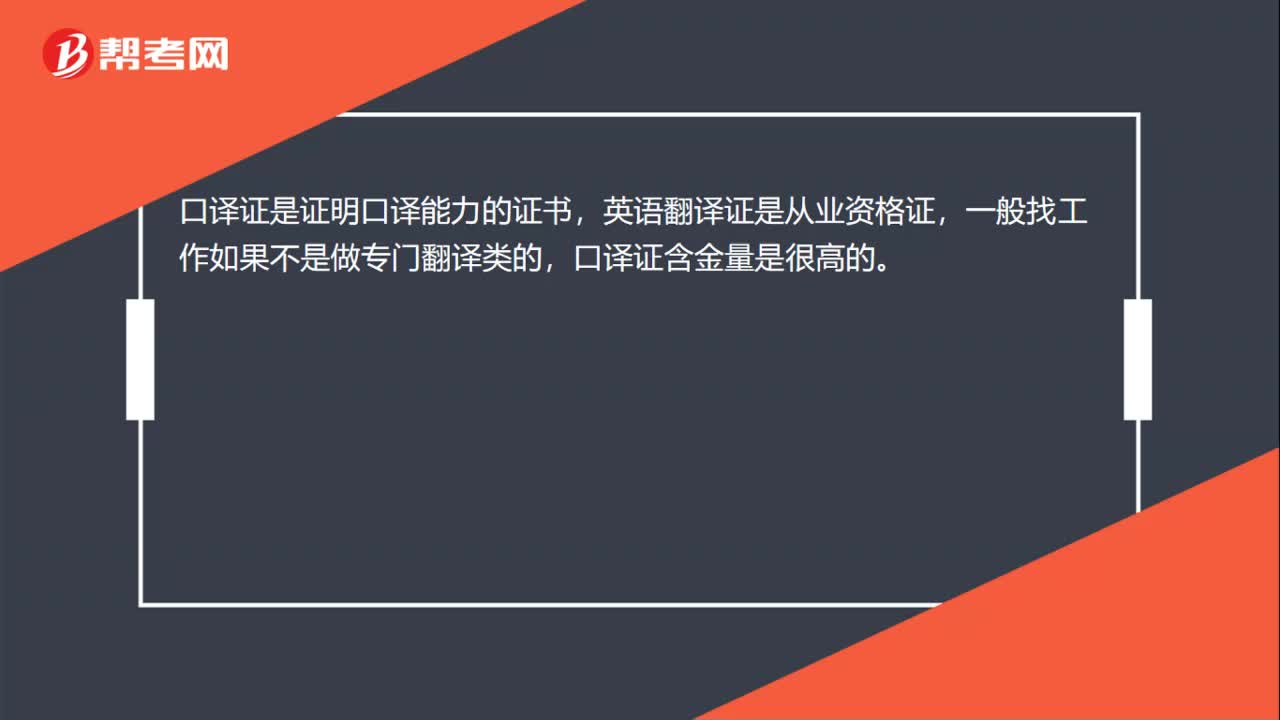 00:17
00:172020-06-03

微信扫码关注公众号
获取更多考试热门资料